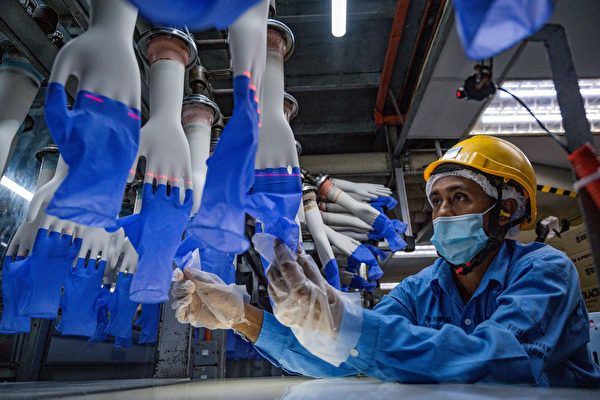Last week, the United States announced new tariffs on Chinese products, leading to an unexpected winner in the stock market: Malaysian rubber glove manufacturers.
According to a report from Nikkei Asia, last week saw the stock price of Top Glove, a major Malaysian rubber glove producer, reach its highest point in nearly two years, surging by 30% in just one week, particularly on Wednesday (May 15). Local competitors such as Hartalega Holdings and Kossan Rubber Industries in Malaysia, as well as Thai competitor Sri Trang Glove, also saw significant increases in their stock prices.
Before the upcoming US presidential election in November, President Biden took a tough stance against China, raising tariffs on Chinese goods. Tariffs on Chinese electric cars and semiconductors are set to increase from 25% to 100%, drawing global attention.
For investors in the Malaysian stock market, the focus is on tariffs on medical and surgical rubber gloves. The US has announced a tariff hike on such Chinese products from the current 7.5% to 25% by 2026.
Jack Goh, an analyst at UOB Kay Hian, Singapore’s largest securities company, stated in a report that raising tariffs on Chinese glove products to 25% “will solidify Malaysia’s market leadership in glove manufacturing and alleviate concerns about Chinese producers losing market share due to intense competition”.
Malaysia is a major producer of natural rubber, with a substantial population of low-cost foreign workers. It is also home to many of the world’s largest medical glove manufacturers. The US is a significant market for medical gloves, with North America accounting for 50% of Hartalega’s annual revenue, as reported by the company.
During the pandemic, global demand for rubber gloves surged, leading to an increase in stock prices for Malaysian glove manufacturers. However, as the pandemic wanes and demand contracts, manufacturers are facing challenges.
Furthermore, Malaysian glove manufacturers face fierce competition from their Chinese counterparts, such as INTCO Medical, Bluesail Medical, and Zhonghong Pulin. It is estimated that the global market share of Chinese companies will rise from around 7% in 2019 to 32% by 2023.
According to calculations by UOB Kay Hian, the average selling price for Chinese manufacturers per 1,000 products is $17, and the new tariffs will raise their products’ prices in the US market to $19 to $20, narrowing the price gap with Malaysia.
In the quarter from December last year to February this year, Top Glove reported a net loss of RM51 million (about $10.8 million), a slight improvement from the RM164 million loss in the same period last year. The report from UOB Kay Hian mentioned that the competitive landscape’s improvement will “boost (Malaysian glove manufacturers’) profitability and profit margins to levels surpassing pre-pandemic levels by 2026”.
Malaysia’s investment bank Maybank upgraded its stock rating for Top Glove from “sell” to “buy”, raising the target price from RM0.80 per share to RM1.21. Similarly, it also increased the target price for Hartalega Holdings from RM3.02 to RM4.36.
“We expect this latest development to narrow the price gap between gloves manufactured in China and Malaysia, making Malaysian gloves more attractive in the US market,” stated Maybank in a recent report.
With the US increasing tariffs, Chinese glove manufacturers will explore other markets, sparking new competition with Malaysian companies. Nonetheless, Maybank pointed out that Malaysian manufacturers can still compete.
“While Chinese glove manufacturers may shift focus to the European market, we believe Malaysian glove producers will be able to compete, especially after several rounds of cost rationalization and capacity reduction over the past two years, leading to improved cost efficiency.”

